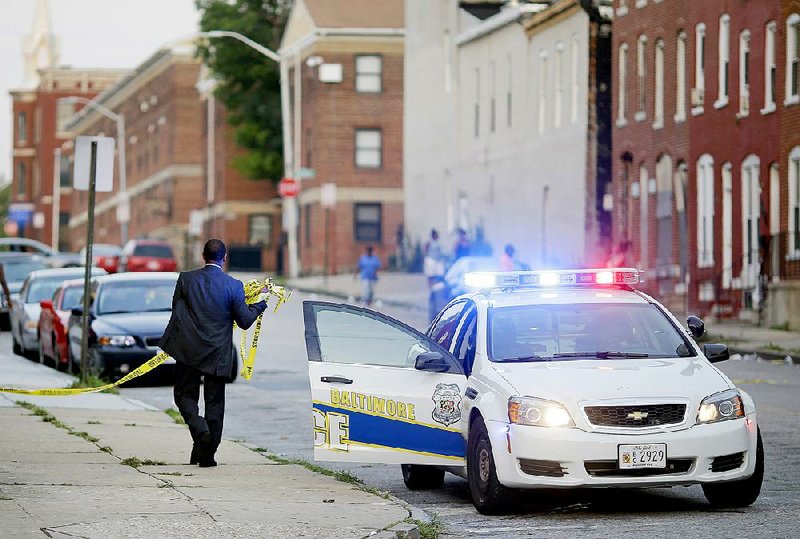BALTIMORE -- Baltimore reached a grim milestone Friday, three months after riots broke out in response to the death of Freddie Gray in police custody: The city would have to go back 43 years to find a month as deadly as July's 45 homicides.
Police reported three deaths -- two men shot Thursday and one Friday. The men died at local hospitals.
With their deaths, this year's homicides reached 189, far outpacing the 119 killings by July's end in 2014. Nonfatal shootings have soared to 366, compared with 200 by the same date last year. July's total was the worst since the city recorded 45 killings in August 1972, according to The Baltimore Sun.
The task of containing the city's violence prompted Mayor Stephanie Rawlings-Blake to fire her police commissioner, Anthony Batts, on July 8.
"Too many continue to die on our streets," Rawlings-Blake said at the time. "Families are tired of dealing with this pain, and so am I. Recent events have placed an intense focus on our police leadership, distracting many from what needs to be our main focus: the fight against crime."
But the killings have not abated under interim Commissioner Kevin Davis.
Baltimore is not unique in its suffering. Crimes are spiking in big cities across the country.
But while the city's police are closing cases -- Davis announced arrests in three recent slayings several days ago -- the violence is outpacing their efforts. Davis said Tuesday the "clearance rate" is at 36.6 percent, far lower than the department's mid-40s average.
Crime experts and residents of Baltimore's most dangerous neighborhoods cite a confluence of factors: mistrust of the police; generalized anger and hopelessness over a lack of opportunities for young black men; and competition among dealers of illegal drugs, bolstered by the looting of prescription pills from pharmacies during the riots.
Federal drug enforcement agents said gangs targeted 32 pharmacies in the city, taking roughly 300,000 doses of opiates, as the riots caused $9 million in property damage in the city.
Perched on a friend's stoop, Sherry Moore, 55, said she knew "mostly all" of the young men killed recently in west Baltimore, including an 18-year-old fatally shot a half-block away. Moore said many more pills are on the street since the riots, making people wilder than usual.
"The ones doing the violence, the shootings, they're eating Percocet like candy, and they're not thinking about consequences," she said. "They have no discipline, they have no respect -- they think this is a game. How many can I put down on the east side? How many can I put down on the west side?"
The tally of 42 homicides in May included Gray, who died in April after his neck was broken in police custody. The July tally likewise includes a previous death -- a baby whose death in June was ruled a homicide in July.
Shawn Ellerman, assistant special agent in charge of the Baltimore division of the Drug Enforcement Administration, said May's homicide spike was probably related to the stolen prescription drugs, a supply that is likely exhausted by now. But the drug trade is inherently violent, and turf wars tend to prompt retaliatory killings.
"You can't attribute every murder to narcotics, but I would think a good number" of them are, he said. "You could say it's retaliation from drug trafficking, it's retaliation from gangs moving in from other territories. But there have been drug markets in Baltimore for years."
Across west Baltimore, residents complain that drug addiction and crime are part of a cycle that begins with despair among children who lack educational and recreational opportunities, and extends when people can't find work.
"We need jobs! We need jobs!" a man riding around on a bicycle shouted to anyone who'd listen after four people were shot, three of them fatally, on a street corner in July.
More community engagement, progressive policing policies and opportunities for young people in poverty could help, community activist Munir Bahar said.
"People are focusing on enforcement, not preventing violence. Police enforce a code, a law. Our job as the community is to prevent the violence, and we've failed," said Bahar, who leads the annual 300 Men March against violence in west Baltimore.
"We need anti-violence organizations, we need mentorship programs, we need a long-term solution. But we also need immediate relief," Bahar said. "When we're in something so deep, we have to stop it before you can analyze what the root is."
A Section on 08/01/2015
